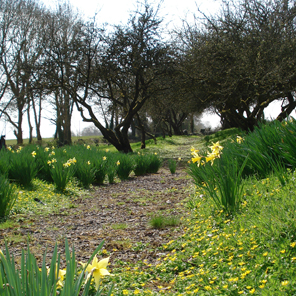
Criticism
This section hosts, inter alia, reflective pieces on the author’s own work – directive of his doctoral extern Prof. Bob Welch UU at Coleraine – as well as responses to his patrician seniores mei, with whom he shares affinity: Samuel Beckett, Derek Walcott and Richard Kearney. Add in a bunch of disparate, if not desperate, bards of the “Celtic Margins” and some blithe, if not blessed, sprites encountered in a Glückian Walk in Elysium, some Canadian Poets of 2009. Not to mention Pussy Riot in Moscow. The Walcott critique appeared in a special AGENDA for the poet edited by Maria Fumagalli; the “Celtic Poets” in Living at the Edge, Living at the Centre / Vivre en Marge, Vivre au Seuil des Possibilités, McKenzie, S., O’ Dowd-Smyth, C. and Thackray, M. (eds.) (2006) Waterford Centre for Newfoundland and Labrador Studies, WIT and Scop; the Richard Kearney in Poetry Ireland Review and the Canadian anthí In Kitty Lewis’s Celebration of Fifty Years of Canadian Poetry (Brick Books on-line). The personal reflective pieces come trailing footnotes, if not “clouds of glory”, from the author’s What Verities Remain.
Verse. Aesthetic and Formal Principles
I will begin an examination of my work with a brief introduction I wrote in 1992 for Dedalus Irish Poets, an anthology of poetry published by the Dedalus Press. Each poet contributing to the anthology was requested by the editor, J.F. Deane, to provide a brief introduction to his or her work. I believe the following introduction provides a working abstract of my own ‘personal helicon’:
Reflections on the Growth of a Personal Aesthetic, Use of Myth, Literary Influences, the Symbolist Approach and the Lyric Mode in Poetry.
Having grown up on the Romantics, particularly Wordsworth and Shelley (Seán Lucy described some early efforts of mine as ‘pure Shelley’), my work has attempted to eschew the didactic mode and overt commentary of:
The Perilous Journey
The archetype of the perilous journey is as old as mythology itself . From the Hellenic tradition, we are familiar with the epic wanderings of Odysseus and Vergil. The medieval play Everyman follows the same theme. The trials of Shakespeare’s King Lear fit the archetype. The Pilgrim’s Progress continues the tradition. In the twentieth century, the archetype remains a recurrent one. Examples include the Yeatsian Byzantium quest, the Joycean use of the Homeric myth in Ulysses and Beckett’s usage in a range of works, most notably, perhaps, Waiting for Godot, where he takes the idea of the wanderer hero and reduces it almost nothing, no real quest but merely a pseudo – saviour of dubious name and one bereft of purpose .
Poetry. From Lyric into Narrative…
Robert Falck notes in his study of the lyric that beyond the lyric of immediate experiencing there is the lyric which reaches farther into society or politics from a ‘confessional’ foundation.113 Robert Lowell’s ‘For the Union Dead’ may be considered a poem of this kind. ‘For the Considerate Dead’114 would be a further example. Dramatic poetry, or the poetry of masks or of imagined personae, on the other hand, is a version of the lyric which…
… to Pussy Riot
No space, or time, to tread softly in the house shoes of poesy. Put on yer stomping boots. Lift your knees high. While Yeats was writing his early stuff on Innisfree, or his later at the end in his phallic tower, Lady Gregory’s tenants were paying the bills. “Easter 1916” was written when it was politic and advisable to do so. Future of the big house and all that. Poem a tat overblown. A wax museum. Even the revolutionaries didn’t see themselves saddled in such rhetoric.
The ‘Religious’ Dimension
“Ennis’s rare talent for successful religious poetry . . . where in a reversal of the approach of Heaney or Longley, he manages to be religious without being religiose”.
John Goodby, University of Swansea, Graph 17.
Walking in Elysium
For some years now, I’ve been walking in Elysium. I’d got a sense of it years ago reading Michael Crummey’s “Her Mark” where Ellen Rose surveys her earthly estate:
Bounded above by the sky, by the blue
song of angels and God’s stars. Below by the bones of those who
made me.
Some Poets and Poetry of the Celtic Margins
The extent of ancient Celtdom stretched from the Burren in Clare to Thrace in Northern Greece, where the poet and singer Orpheus wandered in his last days. We are talking of a significant geographic and demographic entity as is witnessed, for instance, by the remains still in these places of the dolmen reliquaries of the dead.
Responding to Derek Walcott’s Omeros
These evocative lines, rich with an ancient resonance, might serve as epigraph to Omeros by Derek Walcott. The tightening of strings predicates the tone of poem from ‘A man with clouded eyes’. Omeros, a poem of some 322 pages dedicated to Walcott’s ‘shipmates in this craft’, in a communion of living and dead poets, presumably, is as intensely private as it is public.
Listening to Richard Kearney
“I feel a renewed sense of energy and opportunity in Ireland now for cultural activity. I think we are beginning to get out of the old Ireland-England stranglehold and are rediscovering our associations with Europe and the wider world. Historically we enjoyed rich cultural links with Europe . . .” from Interview with Poetry Ireland Review editor John Ennis,PIR 24, Winter 1988, pp10-16.
